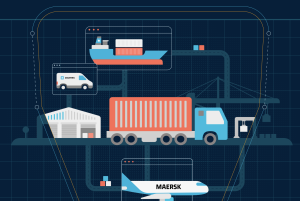 Initiating an enterprise and supplier development (ESD) programme is not something to rush into. It is a process that will achieve very little for everyone involved if it is not carefully planned, aligned with coherent business and supply chain strategies, and rolled out to candidates that have true potential.
Initiating an enterprise and supplier development (ESD) programme is not something to rush into. It is a process that will achieve very little for everyone involved if it is not carefully planned, aligned with coherent business and supply chain strategies, and rolled out to candidates that have true potential.
Lean enterprise acceleration programmes (LEAP) has for more than ten years provided strategic and comprehensive ESD advisory to corporates as well as provided tailor-made support services to small to medium enterprises (SMEs).
LEAP seeks to create lasting impact by observing five main principles. We take a look at the five LEAPs in this month’s SmartProcurement.
1. Smart corporate ESD strategy
Procurement strategy determines a clear vision for ESD programmes. At LEAP, we start with understanding your preferential procurement (PP) targets and your overall organisational goals. By using PP analysis, we assist you to understand how your PP targets need to drive your ESD strategy and how to shift your organisation’s procurement spend to ultimately score higher on your scorecard. The main focus of a sustainable development (SD) strategy is to shift spend to the right suppliers who can be further developed (delivering existing or new services or products more efficiently). However, a comprehensive enterprise development (ED) programme incorporates not only PP targets but also your sales team to identify new markets and regions to take some of your products through by developing distributors and resellers for your organisation.

Transparency is key as everyone needs to understand why certain companies are on the programme and others are not. ESD is not just about developing any company, whether inside or outside your supply chain. Everyone in the organisation as well as outside it needs to have a clear understanding as to what the selection and evaluation criteria are, how to apply and what to expect from an ESD programme. Clear expectations are the cornerstone of a successful programme.

Once SMEs are selected onto an ESD programme, thorough and detailed assessments must be conducted from compliance, financial, technical as well as overall business perspectives. Entrepreneurs and their teams need to be aligned to the gaps identified and understand the requirements for these to be bridged (within and outside of the ESD programme). The operations teams must establish what service levels are imperative for suppliers to reach in order to obtain additional work or to ensure that existing work is done more efficiently. Business analysis must take into consideration the required service levels and only then a developmental plan with milestones can be drafted. Contracting is the final commitment of this step.

LEAP ESD programmes are run on the premise that all interventions are tailor-made to each ESD beneficiary on a programme. We do not run stock-standard programmes that develop entrepreneurs for the sake of developing them. We tease out specific business issues, as and when they occur, and provide assistance. It may be that a supplier cannot deliver larger quantities or to the quality that is desired by an organisation. At LEAP, we deploy the right resources to assist ESD beneficiaries, whether it is a warehouse management company to optimise the space or a civil engineer to assist a construction company with costing systems.
Furthermore, we offer access to funding, whether this is through our own funding opportunities or through other institutions. Ensuring that entrepreneurs have access to new markets and business opportunities is another strong foundation of our programmes.

LEAP’s reporting provides activity progress as well as impact analysis of the overall programme, including matrices such as changes in job creation (part-time and permanent), profit margins, revenue, compliance, etc. It is absolutely critical that all relevant internal stakeholders, including procurement, operations and finance teams are collaborating to make an ESD programme successful. A good change management strategy and implementation plan is essential to ensure sustainability over the long-term.



























